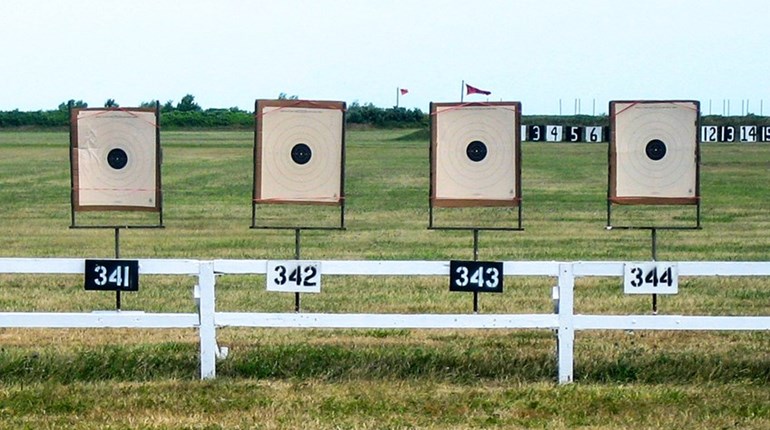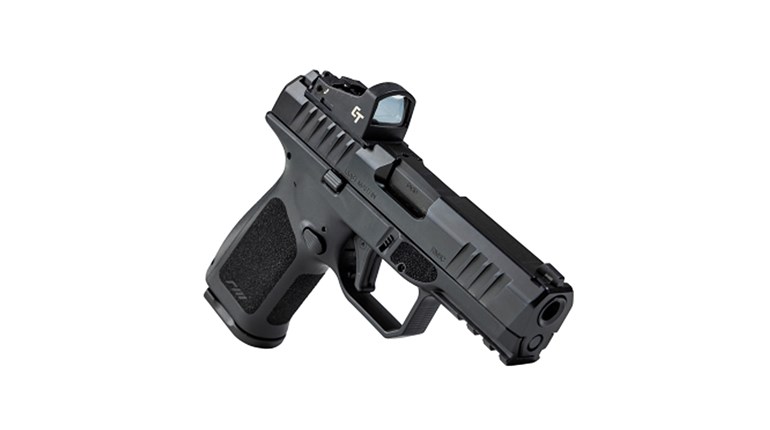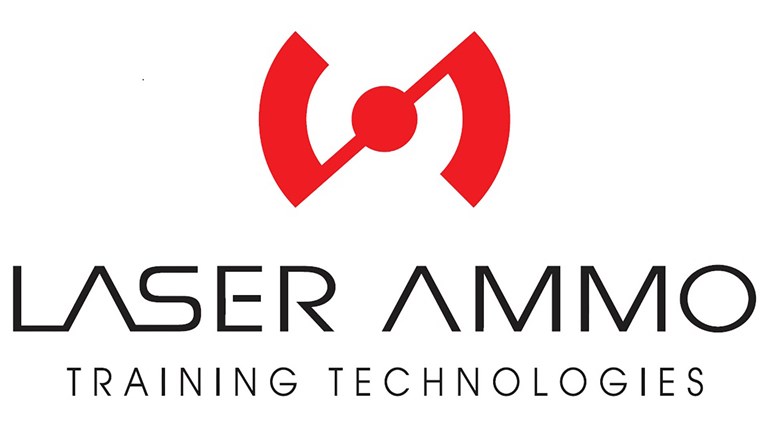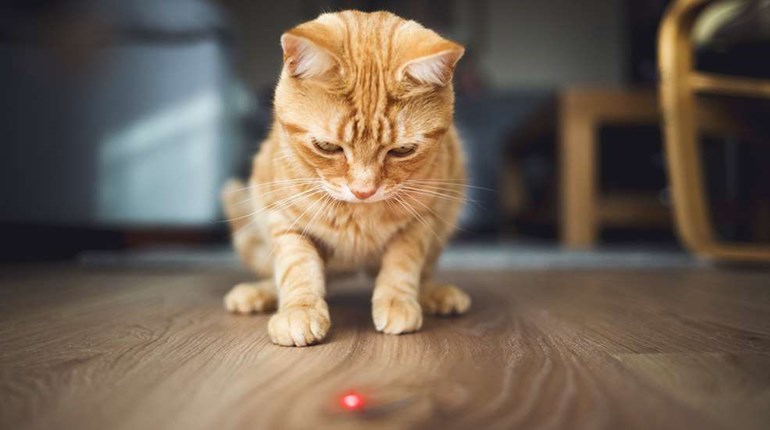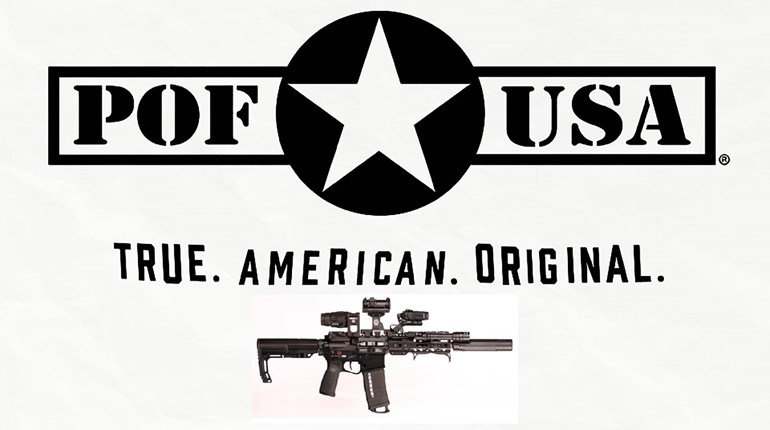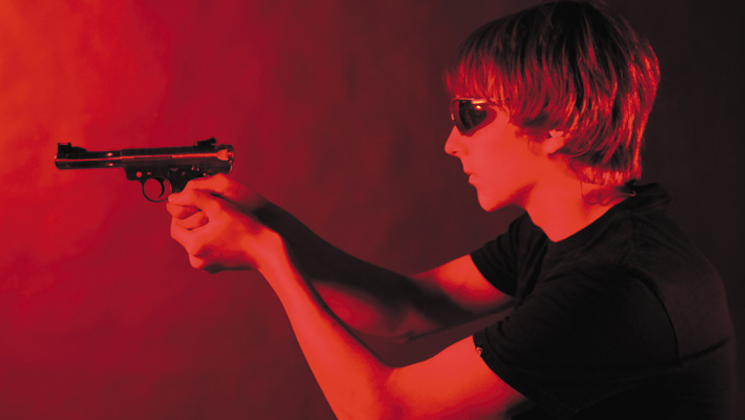
You've grown up with them, but it wasn't too long ago that lasers were the stuff of science fiction. Of course, this changed pretty quickly and what was once a something seen only on field trips to the science center is now something attached to key chains. Most of the recent innovations in lasers concern making them smaller and smaller to allow them to be used on other items. One of the most common of these items is handguns, but laser sighting devices are available for many long guns as well.
This has been a slow and gradual process. The first lasers were expensive and ungainly, negatively impacting the gun's balance. Moreover, they often required modification of the gun and also didn't permit holster use. But that was then.
Now, LaserLyte makes a laser so small it actually fits in the rear sight cut-out of several popular pistols. Crimson Trace and Lasermax replace a gun's grips and recoil guide rod, respectively, allowing incorporation of a laser without changing the gun's dimensions.
More Than A Sighting DeviceOkay, lasers are cool, but are they really necessary? Between magnifying optical scopes, red dot scopes and iron sights-some with glowing tritium or fiber optic inserts-is there really any advantage to a laser?
In a word, yes. Lasers don't come in handy only when actually shooting. Used correctly, they can be a tremendous training aid that helps you improve your technique without requiring you to go to the range and burn through expensive ammunition. The first way that a laser can aid in training is by helping you master the fundamentals of accuracy.
Rules To Live ByBefore we go further, let's establish a few things. A gun is always a gun, even when you are practicing. Always point the gun in a safe direction and always keep your finger off the trigger until you're ready to simulate shooting. You'll need to remove all ammunition from the vicinity. Remember, the point of practice is to develop good habits, not improve some at the cost of others. Also, while lasers are becoming common, they aren't harmless if used improperly. Never point a laser into anyone's eye, including your own; you could permanently damage their vision. Finally, before you can practice at home, the laser must be sighted-in-as you would do with a scope-with live fire. Then, before you train at home, check and double-check that the gun is unloaded. With that understood, here is how a laser can improve your marksmanship.
Unlike other sighting devices, a laser literally contacts the target. It doesn't just superimpose crosshairs or a dot over the target; the beam actually touches it. In live-fire practice, it is only the fired bullet that does that. But since the laser does it, you can practice at home with an unloaded gun. And you can see exactly what's going on where it counts-on the bullseye.
What You'll Need To conveniently practice at home with a laser, all you really need is a black marker, sticky notes and an unloaded, laser-equipped firearm. That's it.Use the marker to make a black dot on a sticky note, then stick the note on a wall at about eye level. Start with a large dot and decrease it as your technique improves.
The Dancing DotGrasp the gun in a firing hold and assume your shooting stance. Use your iron sights to check your alignment, lock into your stance and grip, then look at the target. That little dot is likely dancing all over it.
How can that be? Well, every little tremor of your hands is magnified to the level of an earthquake on the target. Be concerned, but don't worry. The space over which the laser is moving is called your wobble area. Everyone has one, and I mean everyone; even Olympic shooters. The point is, through training, to minimize that wobble area. And now that you can actually see it, you have the feedback to do something about it.
Are you gripping the gun too loosely? Are you exerting too much pressure with your strong hand? Too little with your weak one? Are you generating tension in each direction? Are your feet spaced far enough apart to prevent swaying? Are you controlling your breathing? The laser won't tell you exactly what you're doing wrong, just that something needs attention. You'll have to experiment and the decrease in your wobble area will let you know when you've identified and corrected a problem.
And don't watch the laser only until the trigger breaks. One of the best qualities of the laser is showing you how much the fall of the hammer or impact of the striker affects your alignment and just how critical follow-through is. It may seem to happen instantaneously, but there is still a moment of time after the hammer or striker has struck the cartridge's primer, but before the bullet has left the barrel. During that time, sight alignment must be maintained for accuracy to be achieved. That's the purpose of follow-through. Watch the laser's dot on the target as you pull the trigger and for a moment afterward. The fall of the hammer or impact of the striker should not cause the dot to move.
Other AdvantagesAnother training advantage of a laser is that others can precisely see your sight alignment. Even with someone standing right beside or behind you, they can't really see where your scope or iron sights are aligned, but with a laser they can look at the target and see precisely where you have the gun pointed and how big your wobble area is. Because of this, coaches, friends and family members can observe you and offer advice when you train with a laser.
The other thing about training with a laser that makes it so effective is the frequency with which you can do it. You don't have to buy ammunition or go to the range. You don't have to buy targets or wear eye and ear protection. You can practice virtually as much as you want in the privacy of your own home without disturbing anyone. And the training can prove truly effective.













